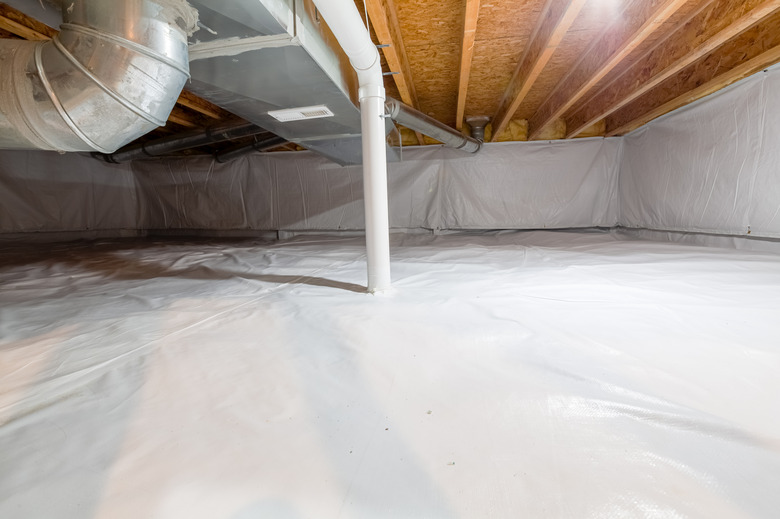The Difference Between Moisture Barrier And Vapor Barrier
We may receive a commission on purchases made from links.
In construction, the terms "moisture barrier" and "vapor barrier" are often used interchangeably. The purpose of a moisture barrier or vapor barrier is to keep moisture outside your house, whether it's liquid moisture, such as rain, or water in its vapor form.
Barriers to Control Moisture
Barriers to Control Moisture
Whether you call them moisture barriers, vapor barriers, or vapor diffusion retarders, they are made of a variety of materials. The International Residential Code places moisture barrier materials into three categories based on how well they limit the movement through them, also known as their permeability. The organization measures permeability with a unit called "perms."
- Class 1 vapor retarders are the vapor barriers with
the lowest permeability. These types of vapor barriers include glass, sheet
metal, polyethylene sheets, and rubber membranes. - Class 2 vapor retarders include extruded polystyrene,
30-pound asphalt-coated paper, plywood, and bitumen-coated kraft paper. - Class 3 vapor retarders include construction materials, such
as gypsum board, cellulose insulation, concrete block, house wrap, and board lumber.
Types of Vapor Barriers
Types of Vapor Barriers
In home construction, builders usually use two kinds of vapor barriers: membranes and coatings. Membranes are thin, flexible materials, such as paper-faced fiberglass roll insulation and polyethylene sheeting, that are fastened to the building with sealing applied to the joints. Vapor barrier coatings are applied like paint and may include paint. For example, painted gypsum wallboard may be enough to limit moisture penetration in a mild climate.
To be effective, moisture barriers should be installed with as few gaps between them as possible. If the barrier is torn or punctured during installation, the holes should be sealed to prevent moisture from moving through the barrier.
The best vapor barrier for your home depends on the climate where you live. The climate will also determine the best place to install the vapor barrier, whether at the exterior or interior of the wall cavity. In hot, humid areas, the barrier should be on the exterior of the wall, while in cold climates, it should be on the interior of the wall.
Where Vapor Barriers Are Used
Where Vapor Barriers Are Used
Vapor barriers are used to control moisture throughout a house, including in attics, basements, walls, and crawl spaces. Many people are familiar with house wraps to prevent moisture from moving into walls because these wraps are visible on new home construction sites. Water barriers are also used to prevent moisture from entering flooring. Moisture barriers should be installed before installing flooring over a concrete subfloor. Otherwise, water can move through the concrete and into the flooring.
Benefits of a Moisture Barrier
Benefits of a Moisture Barrier
Properly installed vapor barriers can help limit the amount of moisture that enters your home. Limiting the amount of moisture that enters your home can help you to make your home more comfortable and energy efficient. When there's too much moisture in your home's air, you may have to run the air conditioner more often to effectively cool the house. Too much moisture in the home can contribute to mold growth.
